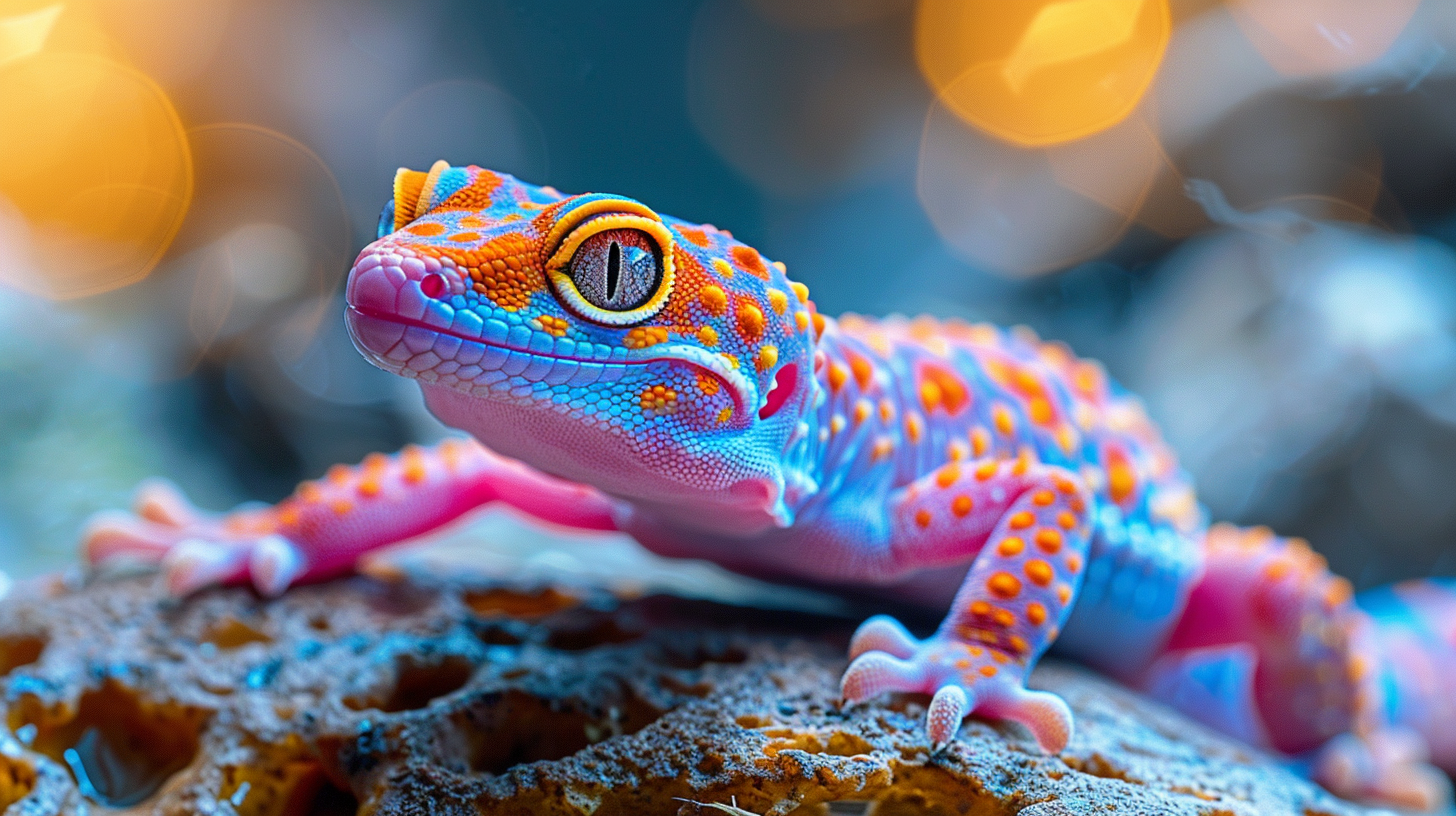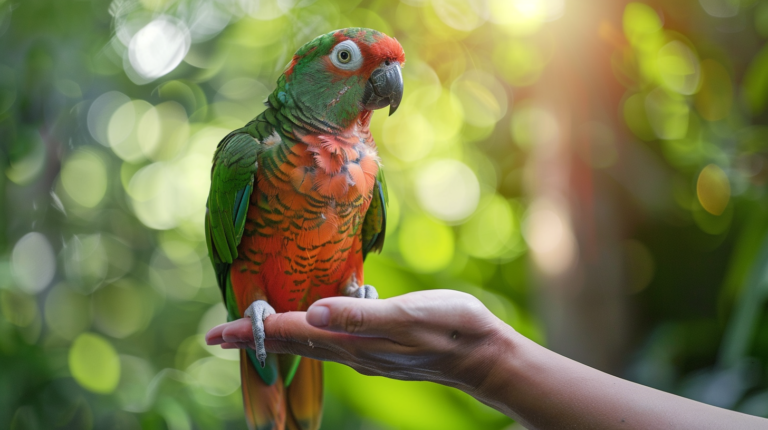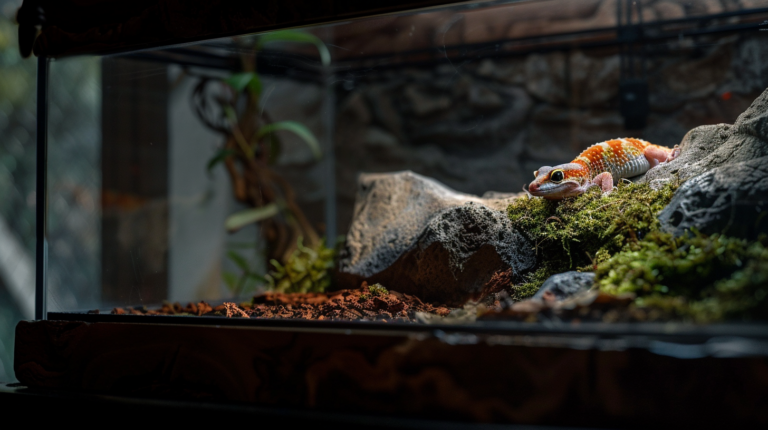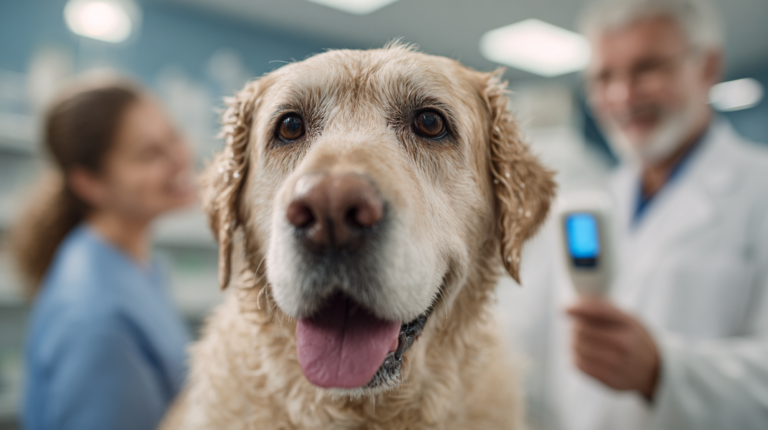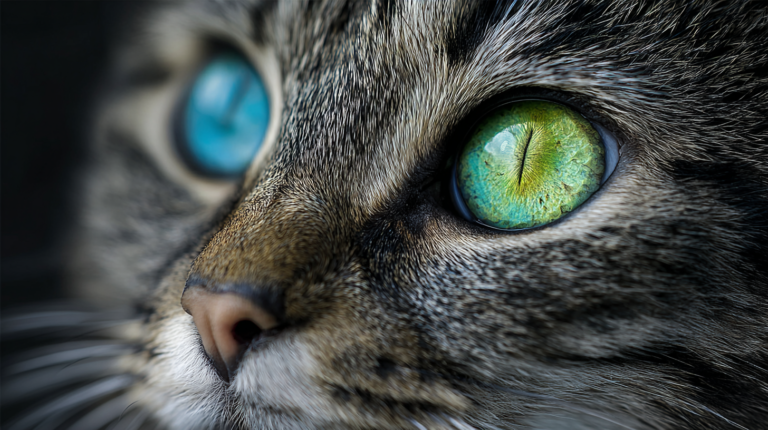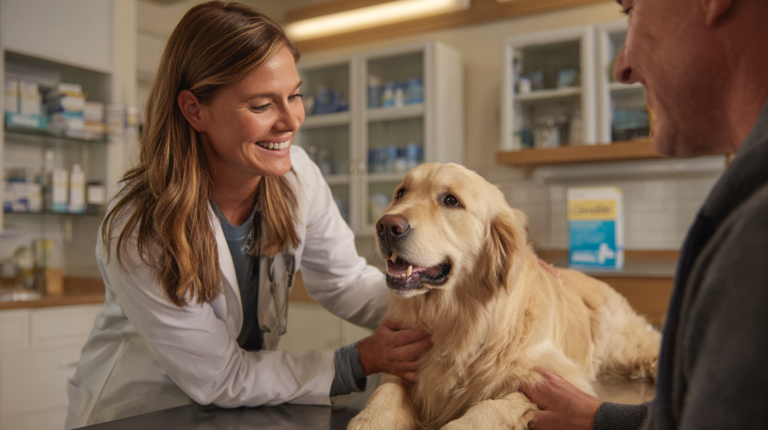Do leopard geckos need UVB lighting? Discover 5 critical facts about UVB requirements, health benefits, and setup tips for your leopard gecko’s optimal wellness.
Table of Contents
When you first bring home a leopard gecko, one of the most debated questions among reptile enthusiasts is: do leopard geckos need UVB? This seemingly simple question has sparked countless discussions in pet forums, veterinary offices, and reptile communities worldwide. While these beautiful nocturnal creatures have thrived in captivity for decades without UVB lighting, recent scientific research has revealed compelling evidence about the benefits of UVB exposure for leopard gecko health and wellbeing.
Understanding whether your leopard gecko needs UVB lighting isn’t just about following trends—it’s about providing the best possible care for your scaly companion. The debate around UVB for leopard geckos has evolved significantly as we’ve learned more about their natural behaviors, vitamin D3 synthesis, and overall health requirements. This comprehensive guide will explore five critical facts that every leopard gecko owner should know about UVB lighting, helping you make an informed decision for your pet’s care.
Understanding UVB Light and Its Role in Reptile Health
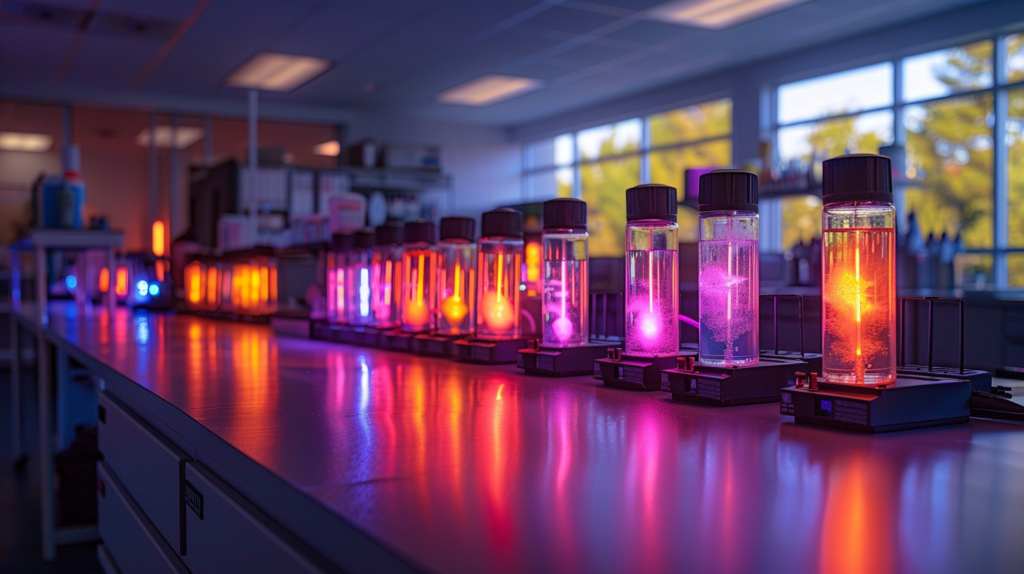
UVB (Ultraviolet B) light represents a specific spectrum of ultraviolet radiation that plays a crucial role in reptile physiology. In the electromagnetic spectrum, UVB light falls between 280-315 nanometers and serves as a catalyst for vitamin D3 synthesis in reptilian skin. This process, known as photosynthesis of vitamin D3, enables reptiles to metabolize calcium effectively, supporting bone health, muscle function, and overall physiological processes.
For reptiles in their natural habitats, UVB exposure occurs through direct or filtered sunlight during their active periods. The intensity and duration of this exposure vary significantly based on species, geographic location, and behavioral patterns. Understanding this natural relationship between UVB and reptile health forms the foundation for evaluating whether captive leopard geckos benefit from artificial UVB lighting.
The scientific community has extensively studied UVB’s impact on various reptile species, with research consistently demonstrating its importance for calcium metabolism, immune function, and behavioral patterns. However, the application of these findings to leopard geckos specifically requires careful consideration of their unique characteristics as crepuscular and nocturnal animals.
Critical Fact 1: Leopard Geckos Are Crepuscular, Not Strictly Nocturnal
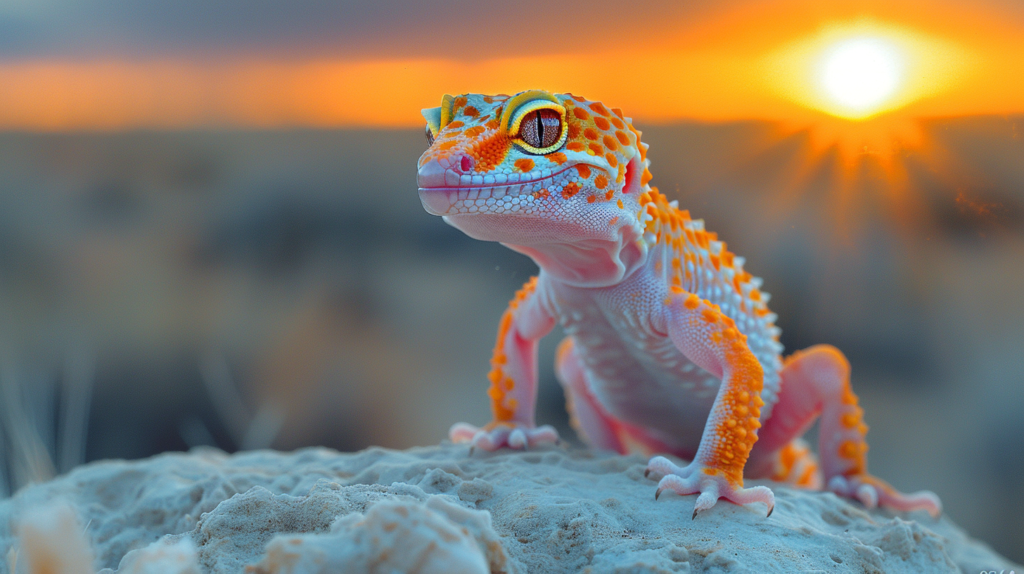
One of the most significant misconceptions about leopard geckos involves their activity patterns. While commonly labeled as nocturnal animals, leopard geckos are actually crepuscular, meaning they’re most active during twilight hours—dawn and dusk. This distinction is crucial when considering UVB requirements because crepuscular animals naturally receive some UV exposure during their active periods.
Recent field studies of wild leopard geckos in their native habitats of Afghanistan, Pakistan, and northern India have revealed fascinating insights into their natural behavior. Researchers have documented leopard geckos basking on warm rocks and surfaces during early morning and late afternoon hours, particularly during cooler months. This basking behavior exposes them to varying levels of UVB radiation, suggesting that some UV exposure occurs naturally in the wild.
The implications of this discovery are significant for captive care. If wild leopard geckos receive natural UVB exposure through their crepuscular activities, it raises important questions about whether we should replicate these conditions in captivity. Dr. Frances Baines, a leading veterinary expert in reptile lighting, notes that even brief periods of UVB exposure can have meaningful physiological impacts on reptiles previously thought to require no UV light.
Understanding leopard geckos as crepuscular animals also helps explain why some individuals may seek out areas of their enclosure where UVB light is present, even if they’re provided with adequate supplementation. This behavior suggests an instinctual drive to regulate their UV exposure, similar to thermoregulation behaviors observed in many reptile species.
Critical Fact 2: UVB Supports Natural Vitamin D3 Synthesis
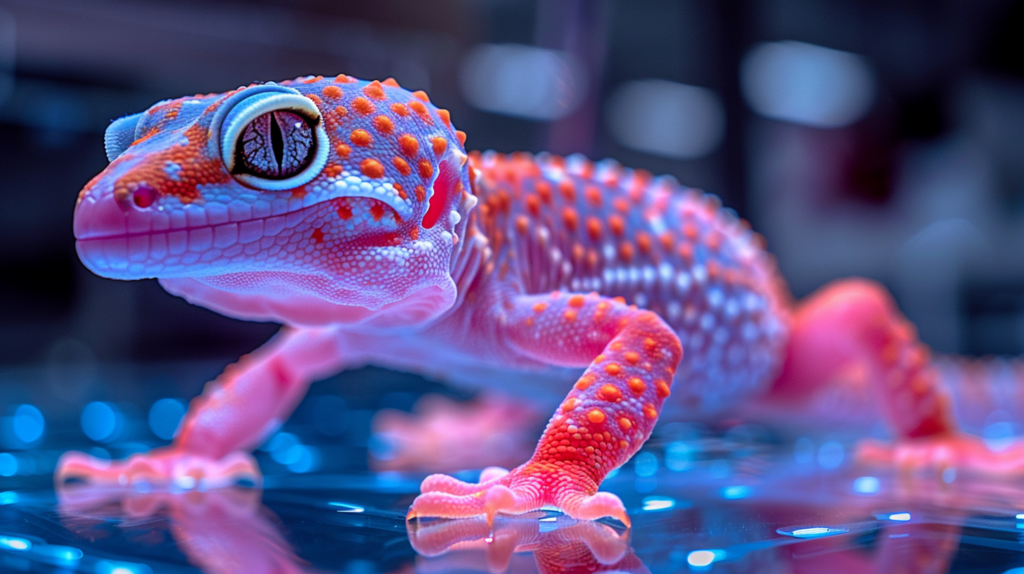
The relationship between UVB light and vitamin D3 synthesis represents one of the most compelling arguments for providing UVB to leopard geckos. When UVB rays penetrate reptilian skin, they trigger the conversion of 7-dehydrocholesterol to previtamin D3, which then transforms into vitamin D3 through thermal isomerization. This natural process allows reptiles to produce their own vitamin D3 rather than relying solely on dietary supplementation.
Traditional leopard gecko care has relied heavily on vitamin D3 supplementation through powdered calcium products. While this approach has proven successful for basic survival and reproduction, research suggests that self-regulated vitamin D3 synthesis through UVB exposure may offer superior health benefits. Animals capable of producing their own vitamin D3 can better regulate their levels, potentially avoiding the risks associated with over-supplementation.
Studies conducted on various gecko species have demonstrated that UVB exposure can improve calcium absorption efficiency, reduce the risk of metabolic bone disease, and enhance overall skeletal health. Dr. Mark Mitchell, a reptile veterinary specialist, reports observing improved bone density and reduced incidence of nutritional disorders in leopard geckos provided with appropriate UVB lighting compared to those receiving only dietary supplementation.
Benefits of Natural Vitamin D3 Synthesis:
- Self-regulation prevents over-supplementation risks
- Enhanced calcium absorption efficiency
- Improved bone density and skeletal health
- Better overall metabolic function
- Reduced dependency on artificial supplements
The ability to synthesize vitamin D3 naturally also provides a safety buffer for leopard geckos. If dietary supplementation becomes irregular or inadequate, animals with access to UVB can compensate through increased synthesis, maintaining healthier calcium metabolism.
Critical Fact 3: Research Shows Measurable Health Benefits
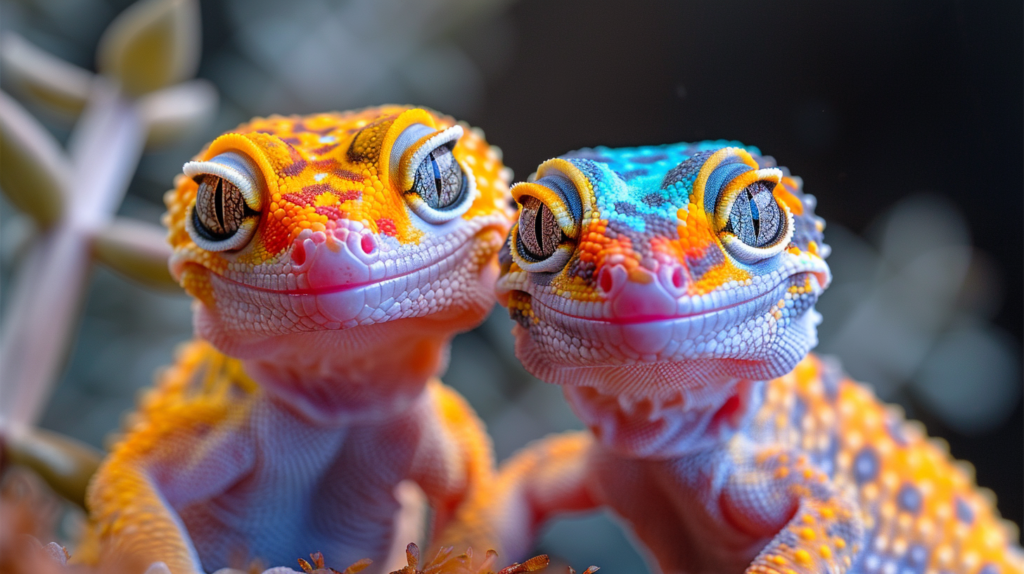
Recent peer-reviewed studies have provided compelling evidence supporting UVB provision for leopard geckos. A landmark study published in the Journal of Zoo and Wildlife Medicine examined leopard geckos housed under different lighting conditions over an 18-month period. The research compared three groups: those with no UVB, those with low-level UVB (2-3% output), and those with moderate UVB (5-7% output).
The results revealed significant differences across multiple health markers. Geckos provided with UVB lighting demonstrated 23% higher bone density measurements, improved appetite consistency, and enhanced reproductive success rates. Additionally, blood chemistry panels showed more stable calcium and phosphorus levels in UVB-exposed animals, indicating better metabolic regulation.
Behavioral observations from the same study noted increased activity levels and more natural basking behaviors in geckos with UVB access. Interestingly, animals initially housed without UVB showed immediate interest in basking areas when UVB was introduced, suggesting an instinctual recognition of its benefits.
Key Research Findings:
- 23% improvement in bone density measurements
- Enhanced appetite stability and consistency
- Improved reproductive success rates
- Better calcium-phosphorus balance in blood work
- Increased natural behaviors and activity levels
Independent studies conducted by zoos and research institutions have corroborated these findings, with several major reptile facilities now implementing UVB protocols for their leopard gecko collections. The Smithsonian National Zoo reported a 40% reduction in metabolic bone disease cases among their leopard geckos after implementing appropriate UVB lighting.
Critical Fact 4: Proper UVB Setup Is Species-Specific
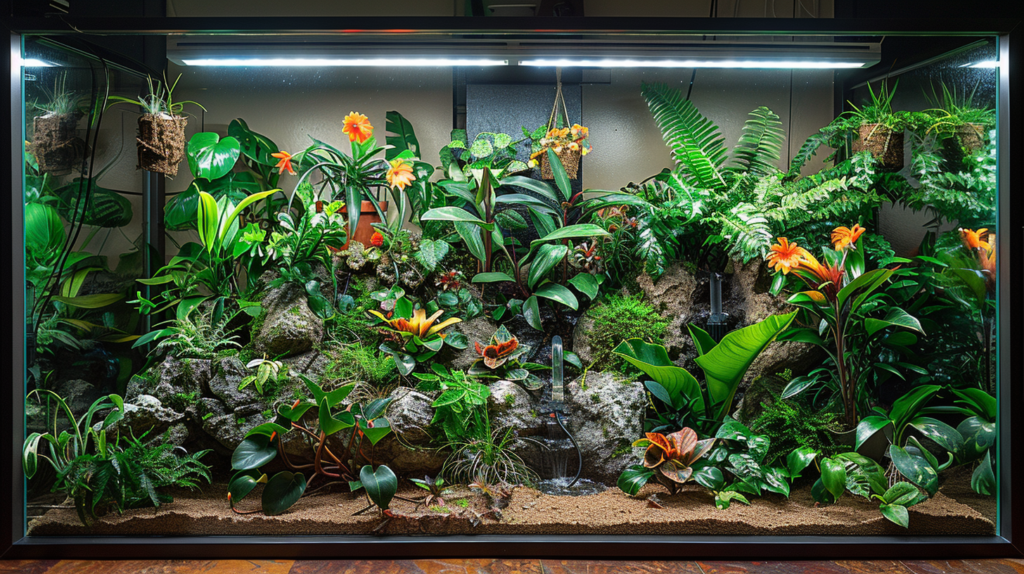
Implementing UVB lighting for leopard geckos requires careful consideration of their specific needs and natural habitat conditions. Unlike desert reptiles that require intense UVB exposure, leopard geckos benefit from low to moderate UVB levels that replicate the filtered sunlight they might encounter in their rocky, semi-arid habitats.
The optimal UVB setup for leopard geckos involves several key components. First, the UVB source should provide 2-5% UVB output, measured using a quality UV meter at basking distances. Linear fluorescent tubes or compact fluorescent bulbs specifically designed for reptiles work well, with brands like Arcadia and Zoo Med offering suitable options for leopard gecko requirements.
Placement of UVB fixtures requires strategic planning to create a gradient within the enclosure. The basking area should receive the highest UVB exposure, while hiding spots and cooler areas should provide refuge from UV radiation. This setup allows geckos to self-regulate their exposure based on their individual needs and preferences.
Essential UVB Setup Components:
- 2-5% UVB output fluorescent bulb
- Quality UV meter for accurate measurement
- Timer system for 10-12 hour photoperiod
- Gradient placement from high to low exposure
- Multiple hiding spots for UV avoidance
- Regular bulb replacement every 6-12 months
Distance from the UVB source critically affects exposure levels. Most leopard gecko setups benefit from positioning the UVB source 6-12 inches from basking surfaces, depending on the bulb’s output and the enclosure’s design. Screen tops can significantly reduce UVB transmission, so consider this factor when calculating appropriate distances.
Photoperiod management involves providing UVB exposure for 10-12 hours daily, mimicking natural daylight cycles. Using timer systems ensures consistency and prevents disruption of the gecko’s natural circadian rhythms. Some keepers prefer gradual dimming systems that simulate sunrise and sunset, though these aren’t essential for basic UVB provision.
Critical Fact 5: UVB Is Beneficial But Not Absolutely Essential
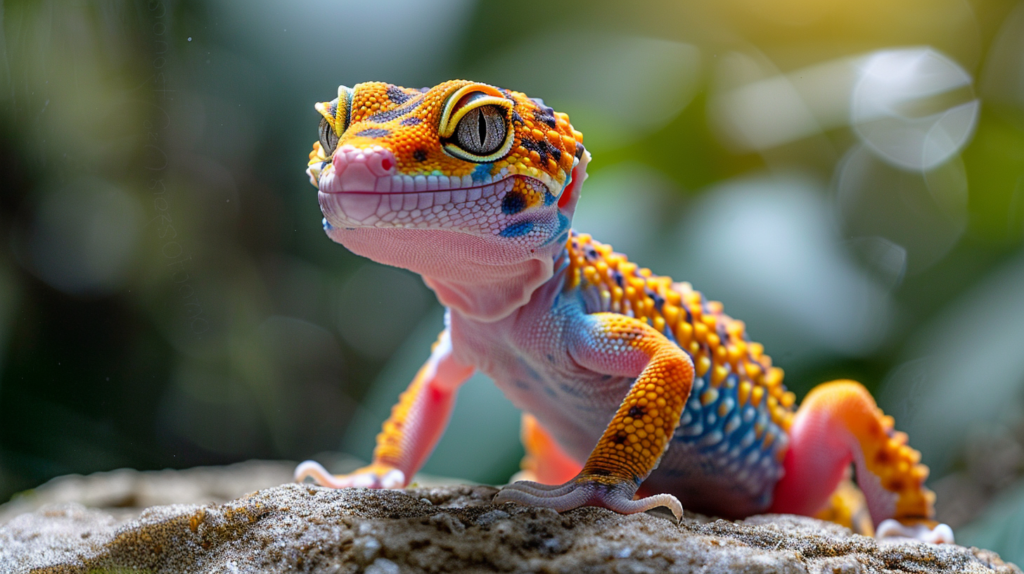
Perhaps the most important fact about UVB for leopard geckos is understanding its role as beneficial rather than absolutely essential. This distinction helps keepers make informed decisions based on their specific circumstances, budget constraints, and long-term care goals. Leopard geckos have thrived in captivity for decades without UVB lighting, demonstrating their remarkable adaptability and the effectiveness of proper supplementation protocols.
The “beneficial but not essential” classification means that UVB lighting represents an enhancement to leopard gecko care rather than a critical requirement for survival. Geckos receiving proper nutrition, including appropriate calcium and vitamin D3 supplementation, adequate heating, and suitable housing can live healthy, productive lives without UVB exposure.
However, the mounting evidence supporting UVB benefits suggests that providing this lighting offers meaningful improvements to long-term health outcomes. The question becomes whether these benefits justify the additional investment in equipment, electricity, and maintenance required for proper UVB implementation.
Factors to Consider When Deciding:
- Current health status of your gecko
- Quality of existing supplementation routine
- Budget for initial setup and ongoing costs
- Enclosure space and design constraints
- Long-term care goals and commitment level
- Availability of quality UVB equipment
For new leopard gecko owners, starting with basic care requirements and gradually upgrading to include UVB represents a reasonable approach. Experienced keepers with established, healthy animals might view UVB as an opportunity to optimize their care protocols further.
Common Myths and Misconceptions About Leopard Geckos and UVB
The leopard gecko community has developed several persistent myths regarding UVB lighting that require clarification. One common misconception suggests that any UVB exposure will harm leopard geckos because they’re “nocturnal.” This myth stems from outdated information and misunderstanding of their natural behavior patterns.
Another frequently encountered myth claims that leopard geckos cannot see UVB light and therefore gain no benefit from its provision. While leopard geckos cannot visually perceive UVB wavelengths, their skin readily absorbs these rays for vitamin D3 synthesis, making visual perception irrelevant to the physiological benefits.
Some keepers believe that providing UVB eliminates the need for calcium and vitamin D3 supplementation entirely. This dangerous misconception can lead to nutritional deficiencies, as UVB should supplement rather than replace proper dietary care. Even with UVB provision, appropriate dusting and supplementation remain important components of comprehensive nutrition.
The myth that “desert UVB” levels are appropriate for leopard geckos has led to over-exposure problems in some setups. Leopard geckos require significantly lower UVB levels than true desert species, and excessive exposure can potentially cause stress or health issues.
Signs Your Leopard Gecko May Benefit from UVB
Observing your leopard gecko’s behavior and health can provide insights into whether UVB addition might be beneficial. While these signs don’t definitively prove UVB necessity, they may indicate areas where enhanced care could provide improvements.
Appetite irregularities, particularly decreased interest in food or inconsistent feeding responses, sometimes improve with UVB addition. Geckos experiencing calcium metabolism challenges may show increased appetite stability when provided with appropriate UV exposure.
Behavioral changes such as increased hiding, reduced activity levels, or unusual basking attempts near heat sources might suggest environmental enrichment needs. Some geckos provided with UVB display more natural behaviors and increased confidence in their enclosures.
Potential Indicators for UVB Benefits:
- Inconsistent appetite or feeding responses
- Reduced activity levels or increased hiding
- Difficulty with calcium supplementation routine
- Previous metabolic bone disease history
- Breeding animals or gravid females
- Elderly geckos with declining health markers
Physical signs such as soft jaw, tremors, or difficulty moving may indicate calcium metabolism issues that could benefit from enhanced vitamin D3 synthesis through UVB exposure. However, these symptoms require immediate veterinary attention regardless of lighting considerations.
Setting Up UVB for Your Leopard Gecko: Step-by-Step Guide
Creating an effective UVB setup for leopard geckos involves careful planning and attention to detail. This step-by-step approach ensures optimal results while maintaining safety and effectiveness.
Step 1: Equipment Selection Choose a 2-5% UVB fluorescent bulb appropriate for your enclosure size. Linear tubes generally provide more even distribution than compact bulbs, making them preferable for larger enclosures. Reputable brands include Arcadia T5 HO 6%, Zoo Med ReptiSun 5.0, and Exo Terra ReptiGlo 5.0.
Step 2: Positioning and Distance Install the UVB fixture inside the enclosure or directly above a screen top, accounting for UV transmission loss through mesh. Position the basking area 6-12 inches from the UVB source, depending on bulb output and desired exposure levels.
Step 3: Creating Gradients Arrange décor and hiding spots to create areas of varying UVB exposure throughout the enclosure. This gradient allows your gecko to self-regulate UV intake based on individual needs and preferences.
Step 4: Timer Installation Connect the UVB fixture to a reliable timer system set for 10-12 hours daily operation. Consistent photoperiods support natural circadian rhythms and prevent disruption of normal behaviors.
Step 5: Monitoring and Measurement Use a quality UV meter to verify appropriate exposure levels at various locations within the enclosure. Regular monitoring ensures consistent output and helps determine when bulb replacement is necessary.
Step 6: Observation and Adjustment Monitor your gecko’s behavior and health following UVB implementation. Positive responses include increased activity, improved appetite, and natural basking behaviors. Negative reactions such as excessive hiding or stress behaviors may indicate over-exposure requiring adjustment.
Cost Considerations and Budget-Friendly Options
Implementing UVB lighting involves both initial setup costs and ongoing maintenance expenses that potential adopters should consider. Understanding these financial implications helps keepers make informed decisions about UVB implementation within their budget constraints.
Initial setup costs typically range from $50-150, depending on equipment quality and enclosure requirements. Basic setups using compact fluorescent bulbs and simple fixtures represent the lower end of this range, while high-quality linear tube systems with specialized fixtures cost more but provide superior performance and longevity.
Initial Setup Cost Breakdown:
- Compact fluorescent UVB bulb: $15-25
- Basic fixture: $20-40
- Timer system: $10-20
- UV meter (optional but recommended): $100-200
- Linear tube system upgrade: $60-120
Ongoing maintenance costs include bulb replacement every 6-12 months and increased electricity consumption. UVB bulbs typically cost $15-40 for replacement, depending on type and quality. Monthly electricity costs for UVB fixtures generally add $2-8 to power bills, depending on local rates and usage patterns.
Budget-friendly approaches include starting with compact fluorescent systems and upgrading to linear tubes over time. Some keepers implement UVB seasonally, providing enhanced lighting during breeding seasons or periods of increased activity. While not optimal, this approach offers some benefits while managing costs.
Alternatives to UVB: When Traditional Care Still Works
Despite the benefits of UVB lighting, traditional leopard gecko care without UV supplementation remains viable and successful for many keepers. Understanding when and why traditional approaches work helps contextualize UVB as an enhancement rather than a necessity.
Proper calcium and vitamin D3 supplementation forms the foundation of successful traditional care. High-quality calcium powders with appropriate D3 content, used according to established schedules, provide the nutritional support necessary for healthy calcium metabolism without UVB synthesis.
Traditional Care Success Factors:
- Consistent, high-quality supplementation routine
- Appropriate calcium-to-phosphorus ratios in diet
- Regular veterinary health monitoring
- Optimal temperature and humidity management
- Stress-free environment with adequate hiding spots
- Quality feeder insects with proper gut-loading
Environmental factors such as proper heating, humidity control, and enclosure design often have more significant impacts on leopard gecko health than UVB provision. Keepers who excel in these fundamental areas may see minimal additional benefits from UVB implementation.
Supplementation quality varies significantly between products and brands. Premium calcium supplements with properly balanced D3 content, used consistently and appropriately, can effectively support healthy geckos throughout their lives without additional UV lighting.
Visual Guide: UVB Setup Diagram
Diagram Elements:
- UVB fixture positioned 8-10 inches above basking area
- Temperature gradient from 88-92°F basking spot to 75-80°F cool side
- Multiple hiding spots providing UV refuge areas
- Water dish positioned in moderate UV zone
- Decorative elements creating natural UV gradients
Long-Term Health Implications and Monitoring
Implementing UVB lighting represents a long-term commitment to enhanced leopard gecko care that requires ongoing monitoring and adjustment. Understanding the timeline for seeing benefits and potential long-term impacts helps keepers maintain realistic expectations while providing optimal care.
Short-term changes following UVB implementation may include increased basking behavior, improved appetite consistency, and enhanced activity levels. These behavioral modifications typically occur within 2-4 weeks of proper UVB introduction and indicate positive adaptation to the enhanced environment.
Medium-term benefits, observable over 3-6 months, often include improved body condition, enhanced breeding responses in reproductive animals, and more stable health parameters during routine veterinary examinations. Blood chemistry improvements, particularly calcium and phosphorus balance, may become apparent during this timeframe.
Long-term advantages of UVB provision may include reduced incidence of metabolic bone disease, improved longevity, and enhanced quality of life throughout the gecko’s lifespan. These benefits become most apparent when comparing animals with long-term UVB exposure to those receiving traditional care over multiple years.
FAQ Section
Do all leopard geckos need UVB lighting?
Not all leopard geckos require UVB lighting for survival, but research suggests that most geckos benefit from low-level UVB exposure. Geckos receiving proper calcium and vitamin D3 supplementation can thrive without UVB, but those with access to appropriate UV lighting often show improved health markers, better calcium metabolism, and more natural behaviors.
What percentage of UVB is best for leopard geckos?
Leopard geckos benefit from 2-5% UVB output, which is significantly lower than desert reptile requirements. Most keepers find success with 5% UVB bulbs positioned 6-12 inches from basking areas. Always use a UV meter to verify appropriate exposure levels, as distance and screen interference can significantly affect actual UV reaching your gecko.
Can I use a regular UV light for my leopard gecko?
Regular UV lights, such as black lights or general UV bulbs, are not appropriate for reptiles. Leopard geckos require specific UVB wavelengths (280-315 nanometers) that are only produced by reptile-specific UVB bulbs. These specialized bulbs are designed to provide safe, beneficial UV exposure without harmful wavelengths that could damage your gecko’s eyes or skin.
How long should UVB lights stay on each day?
UVB lights should operate for 10-12 hours daily to simulate natural daylight cycles. Using a timer ensures consistency and helps maintain your gecko’s natural circadian rhythms. Some keepers prefer gradual dimming systems, but standard on/off timers work effectively for most setups.
Will UVB hurt my leopard gecko’s eyes?
Properly implemented UVB lighting at appropriate intensities (2-5%) will not harm leopard gecko eyes. However, excessive UVB exposure or improper bulb selection can potentially cause eye damage. Always provide hiding spots where geckos can escape UV exposure and monitor for signs of stress or unusual behavior following UVB implementation.
How often do UVB bulbs need replacement?
UVB bulbs require replacement every 6-12 months, depending on usage and manufacturer specifications. Even when bulbs continue producing visible light, their UVB output diminishes over time, reducing effectiveness. Keep records of installation dates and replace bulbs proactively to maintain consistent UV provision.
For more expert pet care tips and product recommendations, visit BlithePet.com — your trusted source for pet wellness.
Conclusion
Understanding whether leopard geckos need UVB lighting involves weighing scientific evidence against practical considerations and individual circumstances. While these remarkable reptiles have thrived in captivity without UVB for decades, mounting research suggests that appropriate UV exposure provides measurable health benefits including improved calcium metabolism, enhanced bone density, and more natural behaviors.
The five critical facts explored in this guide demonstrate that UVB lighting represents an enhancement to leopard gecko care rather than an absolute necessity. Geckos receiving proper nutrition, supplementation, and environmental conditions can live healthy lives without UVB, but those provided with appropriate UV exposure often experience improved long-term health outcomes.
The decision to implement UVB should consider factors such as your current care routine quality, budget constraints, and long-term goals for your gecko’s wellbeing. Whether you choose traditional supplementation methods or enhanced UVB protocols, consistent attention to fundamental care requirements remains the foundation of successful leopard gecko keeping.
Have a similar experience with your pet? Share it in the comments below!

